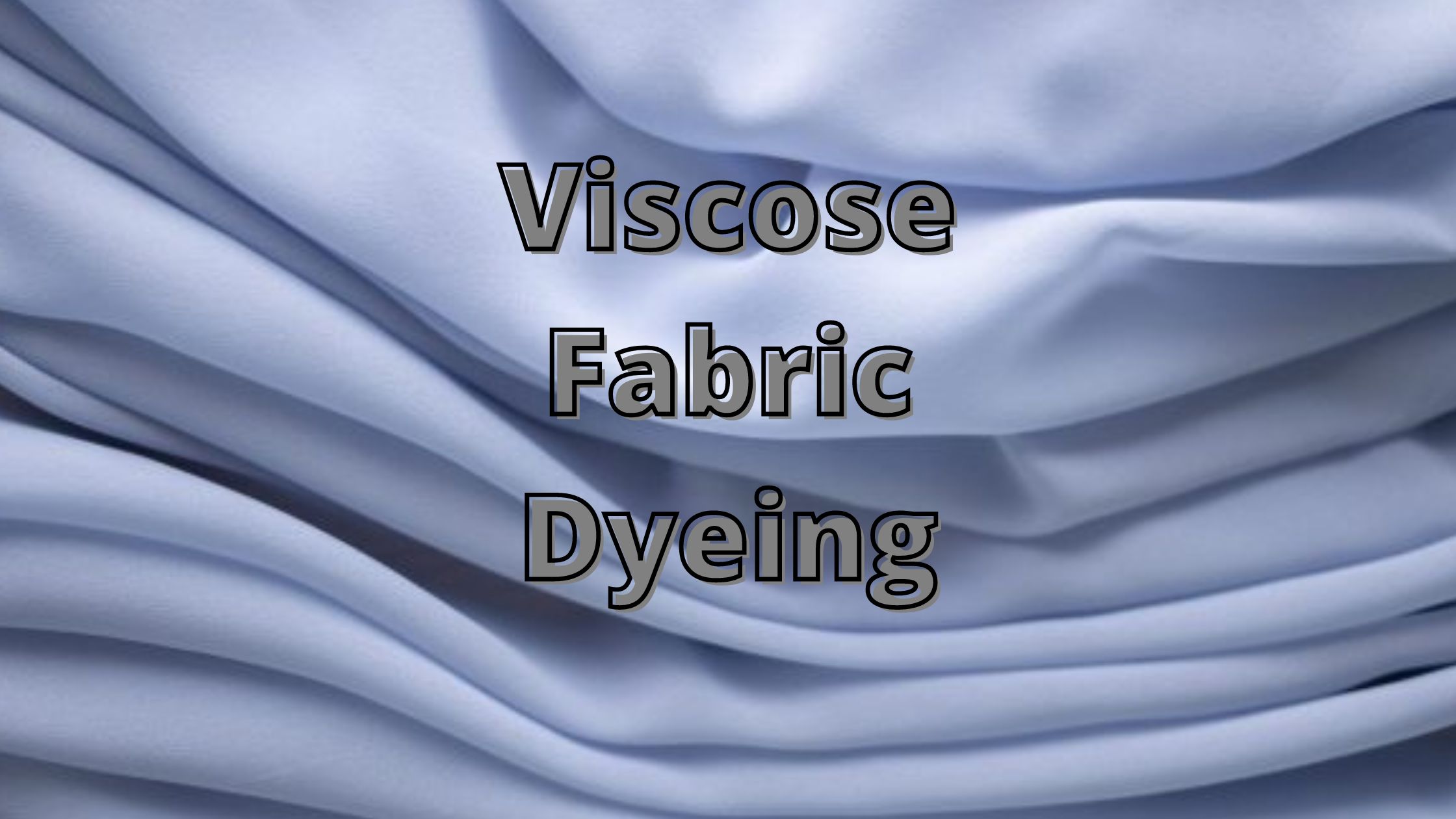Viscose is a regenerated fiber that combines both natural and man-made fiber. Viscose can be dyed in loose, hank, or fabric form with Reactive, Direct, and Vat dyes.
Viscose has a smooth and silky appearance with extreme breathability like cotton. In this blog post, we’ll take a look at the process flow chart for viscose fabric dyeing.
Dyeing is the process of adding color to textile products like garments, yarn, and fabrics. The color is added in the form of dyes, which are usually applied in an aqueous solution. Dyeing is usually done on a piece of equipment called a dye vat or dyebath.
Viscose fabric dyeing is a process that uses synthetic dyes to add color to viscose fabric.
The first step in the viscose fabric dyeing process is to prepare the fabric. This includes pretreatment with chemicals and/or mechanical action to open up the fibers so that they will accept the dye. The next step is to apply the dyestuff to the fabric.
This can be done by immersion, padding, or spraying. After the dyestuff has been applied, it needs to be fixed to the fabric so that it won’t wash out. This is usually done with heat and/or steam.
Once the dyestuff is fixed, any excess color can be removed from the surface of the fabric before it is rinsed and dried.
What Dye Should I Use for Viscose?
Viscose is a natural fiber made from wood pulp that is often used to make clothing and other textile products.
The fiber is soft and has a silky feel, making it a popular choice for garments that are meant to drape well. When it comes to dyeing viscose, you have several options.
You can use any type of dye that works with natural fibers, including reactive dye, vat dye, acid dyes, basic dyes, and direct dyes.
You’ll need to be careful when selecting a dye, as some can cause the fiber to break down or become brittle.
Process Flowchart of Viscose Fabric Dyeing
Fabric loading
↓
Hot Wash, at 800c for 10 min
↓
Drain the water
↓
Water filling
↓
Add Chemicals & Auxiliaries
↓
Check pH (6.5-7.5)
↓
Dosing Reactive dye for 30 min (Run 15 min, Temp 500c)
↓
Salt dosing in two steps at 600c for 15 min each
↓
Soda dosing for 6o min
↓
Shade check
↓
Cool down
↓
Drain
↓
Neutralize with Acetic Acid
↓
Drain
↓
Soaping
↓
Drain
↓
Give Hot Wash (2 or 3 times)
↓
Cool wash
↓
Shade check
↓
Fabric unload
Viscose Rayon Manufacturing process || Viscose Fiber || Flow chart
How Do You Dye Viscose Fabric at home?
Viscose fabric is a type of rayon, which is a semi-synthetic material made from cellulose. Viscose fabric is known for its softness, drapability, and breathability, making it a popular choice for clothing and other textile products.
Because it is made from cellulose, viscose fabric can be dyed using the same methods as cotton or other natural fibers. If you are interested in dyeing, then check the process of dyeing the cotton with tea.
The most common method of dyeing viscose fabric is immersion dyeing, which involves submerging the fabric in a dyebath and allowing it to soak up the color. This method can be used with both reactive and direct dyes.
Reactive dyes are the best choice for immersion dyeing because they create the strongest bond with the fiber molecules, resulting in more vibrant and long-lasting colors.
Direct dyes are less expensive than reactive dyes but they don’t produce as rich colors and are more likely to fade over time. When using either type of dye, it’s important to pretreat the fabric beforehand with a mordant or fixative.
This helps the dye adhere to the fibers better so that the color doesn’t bleed or fade after repeated washings.
Once the pretreatment is complete, you can proceed with immersion dyeing by following these steps:
1) Fill a large vessel with warm water and add your chosen dye to it according to the manufacturer’s instructions. Stir until evenly mixed.
2) Submerge your viscose fabric in the dyebath and allow it to soak for 30 minutes to an hour. Use wooden or plastic paddles to keep the fabric submerged if necessary.
3) Remove the fabric from the dye bath and rinse thoroughly with clean water until all traces of loose dye have been removed.

Credit: textilelearner.net
To Sum Up
Viscose fabric is a type of textile made from wood pulp. The manufacturing process of viscose fabric is quite similar to that of other cellulosic fabrics such as cotton and linen.
In this blog post, we will take a look at the process flow chart of viscose fabric dyeing so that you can easily dye your fabrics at home.
References:
- Handbook of Textile and Industrial Dyeing
- The technology of Dyeing by V. A Shenai
- Textile Dyes by N N Mahapatra
Salma Hasin the author of this site completed her BSc. in Textile Engineering (Wet Processing Engineering). She wants to share her knowledge to help students in their studies and businessman & entrepreneurs in their businesses in making wise decisions fast.

